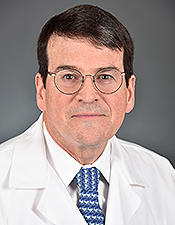New gene therapy strategy for sickle cell disease shows early promise in humans
- Published:

Patient with severe disease is symptom-free after gene therapy knocks down BCL11A, restoring fetal hemoglobin production
Dana-Farber/Boston Children's Cancer and Blood Disorders Center reports positive results treating sickle cell disease in its first patient, using a novel gene therapy approach that induces production of fetal hemoglobin while silencing production of the abnormal sickle form of adult hemoglobin. The research team, led by David A. Williams, MD, will share findings in the trial’s first patient on Saturday, December 1, at the 60th Annual American Society of Hematology (ASH) meeting in San Diego, California.
In sickle cell disease, a mutation in the hemoglobin molecule, which carries oxygen, distorts red blood cells into a crescent or sickle shape. This can block red blood cells from passing through blood vessels and delivering oxygen to organs and tissues. Symptoms include anemia, repeated pain episodes that often require hospitalization and life-threatening organ damage.
The investigator-initiated clinical trial used a form of gene therapy designed to knock down the expression of the BCL11A gene to allow production of high levels of fetal hemoglobin. The first patient, a 21-year-old male who previously required monthly blood transfusions, is symptom-free, has significantly increased levels of fetal hemoglobin, and has no demonstrable sickled cells in his blood. Researchers now plan to treat additional patients between ages 3 and 40 in the ongoing clinical trial.
Restoring fetal hemoglobin
Most people gradually stop making fetal hemoglobin shortly after birth, its production blocked by BCL11A. While most then switch to making healthy adult hemoglobin, people with sickle cell disease transition to making a mutated, sickled hemoglobin.
It’s been known for many years that people’s ability to produce fetal hemoglobin after birth can reduce the severity of their sickle cell disease. This clinical trial, however, marks the first clinical data from an approach targeting BCL11A as a strategy to increase fetal hemoglobin.
“Our gene therapy approach is unique in that it leverages the physiology of the hemoglobin switch to simultaneously increase fetal hemoglobin, which does not sickle, and directly reduce sickling hemoglobin. Other gene therapy trials for sickle cell disease are adding genes that encode fetal hemoglobin or corrected, non-sickling adult hemoglobin, without directly targeting the fetal switch of the sickle hemoglobin gene,” says Williams, president of Dana-Farber/Boston Children’s Cancer and Blood Disorders Center, Chief Scientific Officer and Senior Vice President of Boston Children's Hospital and a professor at Harvard Medical School. “We predict this strategy is a very effective way to reduce or even eliminate the sickling of cells."
“This is a successful example of collaborative bench-to-bedside research,” adds Erica Esrick, MD, co-principal investigator on the clinical trial and a pediatric hematologist-oncologist at Dana-Farber/Boston Children's. “The preclinical work leading to this study dates back several years, and was born out of a decades-long focus on clinical and discovery-based hemoglobinopathy research at Boston Children’s Hospital.”
Key basic research leading up to the clinical trial includes the 2008 discovery by Vijay Sankaran, MD, PhD, and Stuart Orkin, MD, of Dana-Farber/Boston Children’s that variations in BCL11A expression affect levels of fetal hemoglobin. That was a clue that targeting BCL11A could be of therapeutic interest. That approach successfully reversed sickle cell disease in a mouse model in 2011.
In the clinical trial, the patient’s blood stem cells were collected and exposed to a lentiviral vector containing instructions to knock down BCL11A, but only in precursors of red blood cells. The patient then received chemotherapy in a process called conditioning, likened to plowing a field to make room for new seeds. Finally, the gene-modified cells were given back to him in an intravenous infusion.
“We have collected cells from several additional patients and will be ready for them to undergo infusions soon,” says Esrick. “It’s a very exciting time for patients, physicians and researchers in the sickle cell disease community, with curative approaches such as gene therapy and gene editing showing great promise.”
Others involved in the clinical trial include study co-principal investigator Alessandra Biffi, MD, as well as, Matthew Heeney, MD, Leslie Lehmann, MD, Wendy London, PhD, and John Manis, MD, at Dana-Farber/Boston Children’s, and Maureen Achebe, MD, MPH, at Brigham and Women’s Hospital. The vector technology developed in Williams’s laboratory has been exclusively licensed to bluebird bio in Cambridge, Massachusetts. Bluebird bio has also provided technical support for the program and virus supernatant produced under GMP conditions.
The trial is funded by the National Institutes of Health.

 Translate
Translate